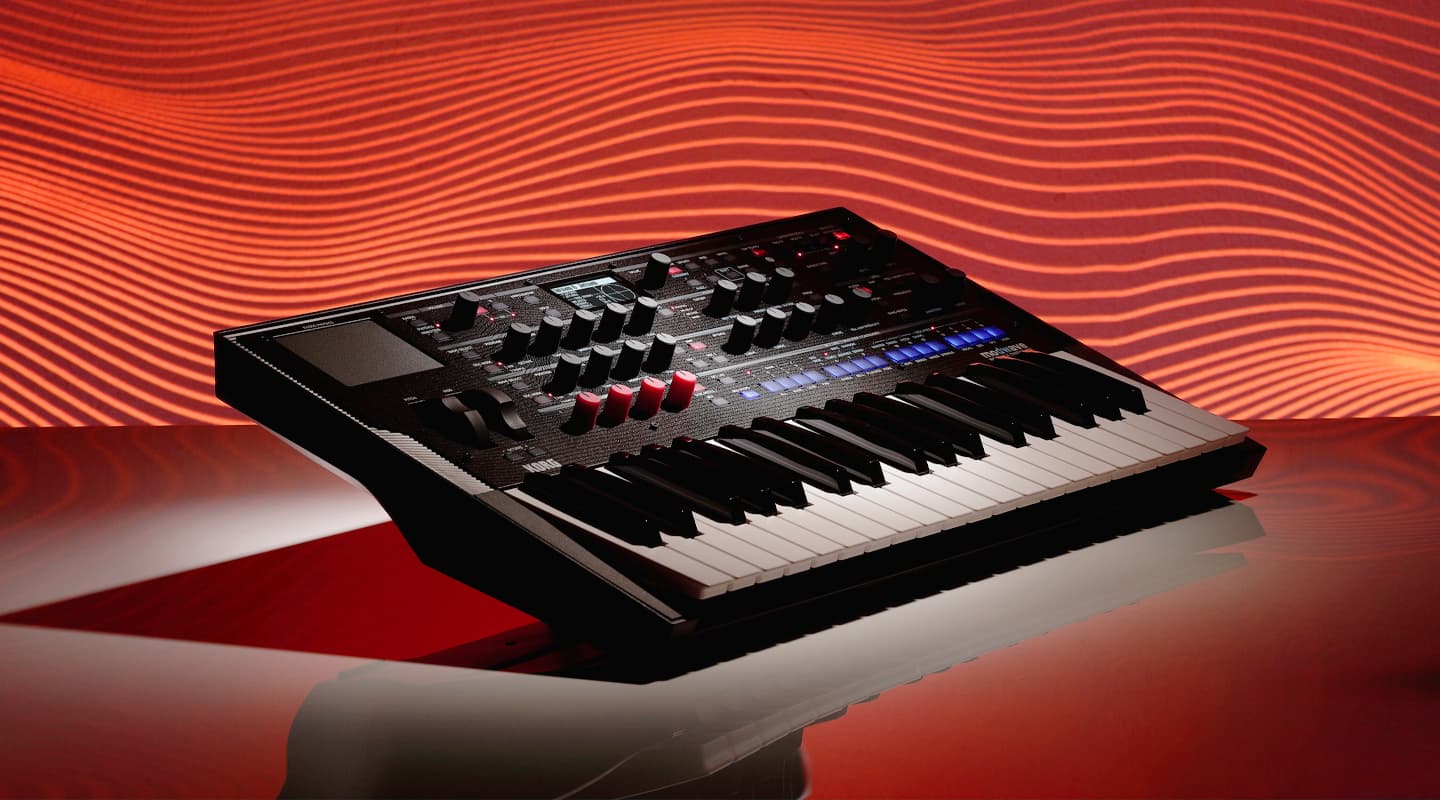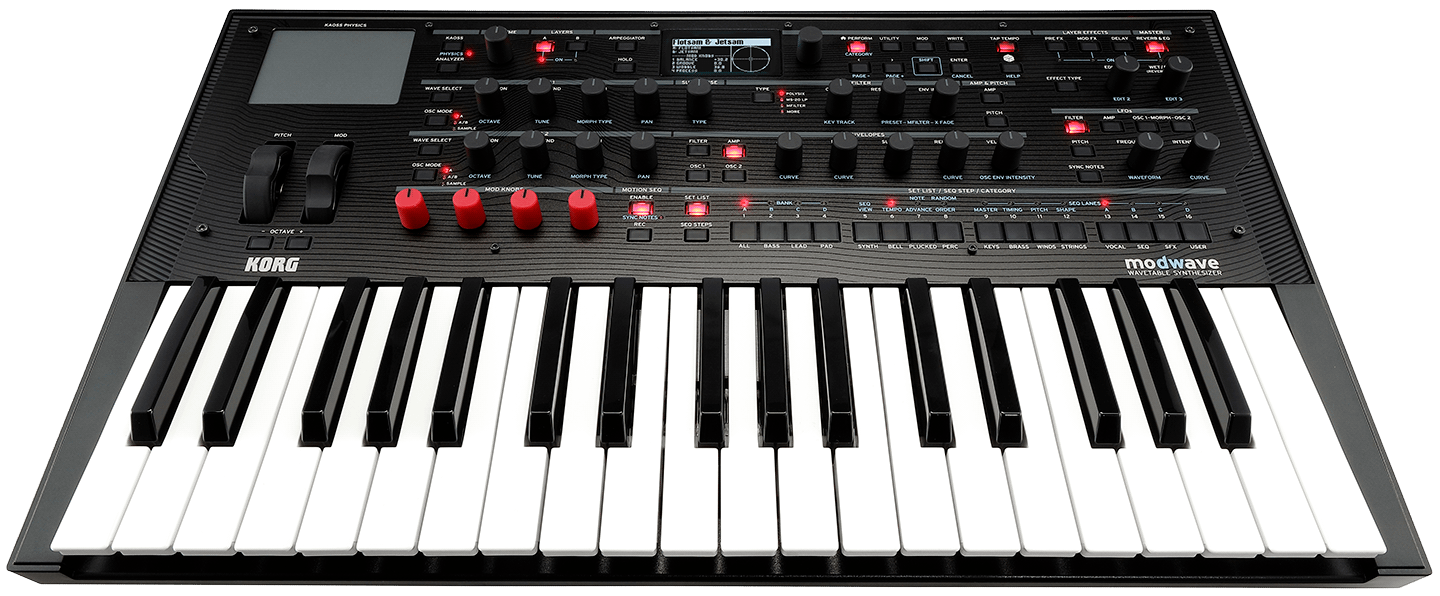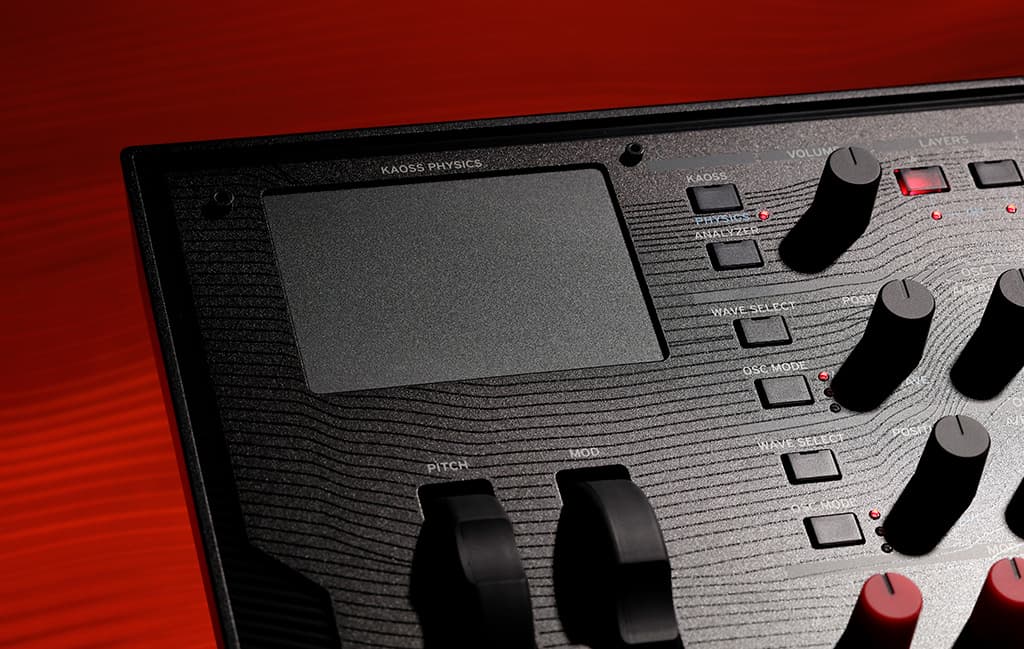
Review: Korg ModWave Wavetable Synth
ModWave lifts the lid on wavetable synthesis, adding a whole array of modding, morphing, munting and mangling tools to create something unique.
It’s the third in the Korg trilogy. Wavestate made wave sequencing accessible; the OP6 (mostly) demystified FM synthesis; and now the ModWave aims to lift the lid on wavetable synthesis. They all share the same chassis, look and feel, and are all similarly priced. These synths are affordable workhorses. I like the feel and feedback from the knobs and buttons; the small screen is sufficient thanks to the plethora of other controls; and it feels sturdy. But they are lightweight and the chassis is plastic. They’re ‘use ’em now’ synths rather than collectors’ items.
ON THE TABLE
So how does ModWave differ from WaveState? It sticks in my craw to do so, but I’ve got to take a stab at explaining the difference between Wave Sequencing and Wavetable synthesis. Gosh, it’s tedious… I’d really rather get back to messing around with the synth. But here goes:
Wavestate uses wave sequencing. A wave sequence is a series of different samples end to end — you can alter each sample’s length, pitch etc but the sequence stays the same.
ModWave is a wavetable synth. A wavetable uses waveforms (which could be a sawtooth, sinewave etc, or a slice of a sample) and can dynamically switch ’n’ slide between a number of those waveforms to create complex sounds.
Wavestate’s sweetspot is in those heavily sequenced sounds (like a one-note soundtrack) while ModWave’s sweetspot is in more evolving/morphing sounds (although it can switch abruptly as well). They can share a lot in common.
PANTHEON PLAY
The legendary synth of the early ’90s, the Korg Wavestation has already guaranteed its position in the immortal synth pantheon for its wave sequencing sounds. The more anonymous wavetable synth of the ’80s, the Korg’s DW8000, is still waiting on its call-up to the hall of fame, but remains very influential.
So, what the Wavestate is to the Wavestation, the ModWave is to the DW8000.
The ModWave is a 32-note polyphony, bi-timbral synth. Its sonic palette is drawn from 200 wavetables each containing up to 64 waveforms, and themselves from thousands of individual waves.
Two wavetables can comprise an oscillator. Two oscillators plus sub/noise source comprise a program. I’ve included Korg’s structure diagram as it’s far easier to visualise what’s going.
NEED TO KNOW

COMPLEX SITUATION
The complexity of the sound of a wavetable is largely down to the modifiers — how you mess with the wavetables. ModWave has more than 30 modifiers. But that’s just the beginning. ModWave also packs 13 Morph types that help create further motion in the sound.
It’s a world away from your more standard subtractive synth. You really need to suck it and see with these modifiers and Morph types. Each can work differently depending on the wavetable, the waveform, the position within the waveform etc. It’s infinitely variable.
And that’s before you mess with the envelopes and LFOs… which are comparatively predictable.
Korg’s new ‘ace’ in the mod ‘hole’ is the X/Y touchpad — which controls any mod destination combination of your choice. Korg’s Kaoss pad is nothing new but it’s a great addition to a synth like this. What is new is something Korg is dubbing Kaoss Physics — which describes the way you can automatically set the Kaoss Pad’s modulation in motion. A bouncy Kaoss ball on the display shows you what the Physics feature is up to. You can set the ball in motion with an initial gesture with your finger. There are a bunch of options for controlling the ballistics: if the Cylon bouncy ball gathers pace or slows down once it encounters a surface etc. You can get lost for hours. I’ll cut/paste the Korg explanation of Kaoss Physics into a box item for more detail.
MORE MIGHTY MODS
Let’s not forget Motion Sequencing. The 2.0 iteration allows you to create modulated and sequenced sounds otherwise impossible to conjure by recording real-time knob tweakage. You can program timing, pitch, shape and four sets of step sequence values in separate lanes, each with potentially different start and loop ends.
If it wasn’t for all the cavalcade of other means to mess with your sound, the filters would be something you’d write home about. You have the choice of the MS20 lowpass and highpass filters, a Polysix lowpass, and the always surprising Multi Filter.
Given the bewildering depth of mod possibilities, I’m grateful for the four red mod knobs, placed in prime position above the keybed. You can assign whatever mod source/destination you like to the knobs, in fact, you can assign multiple mod sources to the one knob if you like.
It’s astonishing really. When you think that so many synths’ scope for sonic manipulation is restricted to, say, the mod wheel, an LFO and the filter, the ModWave’s surface is bristling with every imaginable way of digging into your sound, sometimes in mysterious yet no less wondrous ways.


EFFECTS
There’s a serious amount of FX firepower. As you can see on the Structure diagram, each layer has a Pre FX, Mod FX and dedicated Delay engine, along with a shared Reverb engine. Some synth addicts may curate a collection of outboard speciality effects and pedals for their synths, well there’s absolutely no need with the ModWave. There are plenty of options (for example, the delay line has tape delay, reverse delay, multiband mod delay and more), including guitar amp/pedal models. It’s impressive.
PERFORMANCE
With its ‘reach out and grab em’ user interface, the ModWave is crying out to used as a performance synth. The Motion Sequencing buttons double as shortcuts to your favourite sounds in Set List mode. You can also use those buttons to audition sound categories, which is a time saver. There’s a smooth transition/overlap of sounds when you switch programs, which is an important performance consideration. Finally, it weighs less than 3kg and is super easy to transport as a result.

WHO’S IT FOR?
Good question. There will be a healthy section of the synth fan, producer and soundtrack composer crowd that will be falling over themselves to buy ModWave — it’s deep, fun, playable, well priced, and has all sorts of polyphony.
Just about every last ModWave factory program demonstrates the ModWave difference. You want a lead sound? Sure. ModWave has a bunch and they invariably make the most of the wavetable goodness available — they’ll have an edge; some movement; a difference. Ditto the bass sounds.
The sonic possibilities of ModWave are endless. There are gigabytes of sample data onboard to create anything you like. Want a Rhodes sound? Sure, there are samples for that. But you’re not making the most of the Wavetable synth engine by playing it like a sample playback device, and there are plenty of alternative ways of achieving a more detailed, modelled Rhodes experience (again, just using the Rhodes as one example).
Korg’s array of carefully curated and outstanding presets, showcase the ModWave difference — sounds you can’t create on other synths, even other wavetable synths.
The emphasis is on sounds that are brash, complex, digital, sometimes scary, and just a bit ‘mad, bad and dangerous to know’, to borrow a phrase.
I admire Korg’s confidence in sending its wavetable baby into the world with so much character (don’t try and find standard fare such as ‘Orchestral Strings’ or ‘Synth Bass 1’, for example): evolving, complex, sometimes menacing, pad sounds abound. It’s really like sending your child to its first day of school with a mohawk. I love it.
Just to emphasise the point: you can massage and create sounds that explore ModWave’s deep and varied repository of samples; create wavetables that explore its more glassy and fragile side, for example… I’m not type-casting ModWave. But to stake its claim in a crowded market where synth lovers are spoilt for choice, ModWave wears its ‘I’m Different’ credentials with pride.
Which means ModWave is unlikely to be your first hardware synth — a more general-purpose synth will be a more obvious alternative (from Korg or others; we’re spoilt for choice). But when you know you want (or need!) ModWave, I can guarantee you, you won’t be disappointed.
























RESPONSES